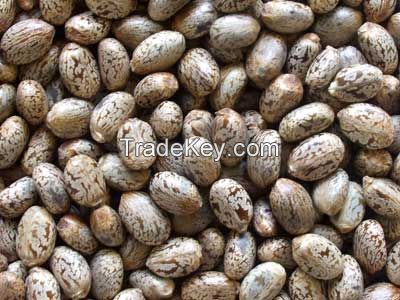Description
Castor Seeds
Ricinus communis, the castor oil plant is a species of flowering
plant in the spurge family, Euphorbiaceae. It is the sole species
in themonotypic genus, Ricinus, and subtribe, Ricininae. The
evolution of castor and its relation to other species are currently
being studied using modern genetic tools. It reproduces with a
mixed pollination system which favor selfing by geitonogamy but at
the same time can be an out-crosser by anemophily or
entomophily.
Its seed is the castor bean, which, despite its name, is not a true
bean. Castor is indigenous to the southeastern Mediterranean Basin,
Eastern Africa, and India, but is well-known throughout tropical
regions (and widely grown elsewhere as an ornamental plant).
Castor seed is the source of castor oil, which has a wide variety
of uses. The seeds contain between *0% and *0% oil that is rich
intriglycerides, mainly ricinolein. The seed also contains ricin, a
water-soluble toxin, which is also present in lower concentrations
throughout the plant. Ricin is one of the most poisonous naturally
occuring substances known in castor seeds. The seeds from the
castor bean plant, Ricinus communis, are poisonous to people,
animals and insects.
Castor oil is a vegetable oil obtained by pressing the seeds of
theCastor plant (Ricinus communis). The common name castor oil,
from which the plant gets its name, probably comes from its use as
a replacement for castoreum, a perfume base made from the dried
perineal glands of the beaver (castor in Latin).
Though castor plant or castor oil is not a food, yet it is one of
the most commonly used oils allover the world as a safe purgative
and drug for reducing irritation of the skin and alleviating
swelling and pain. The castor seed plant contains alkoloid ricinine
and toxalbumine ricin. They yield a fixed oil which is used mainly
for medicinal purposes.
